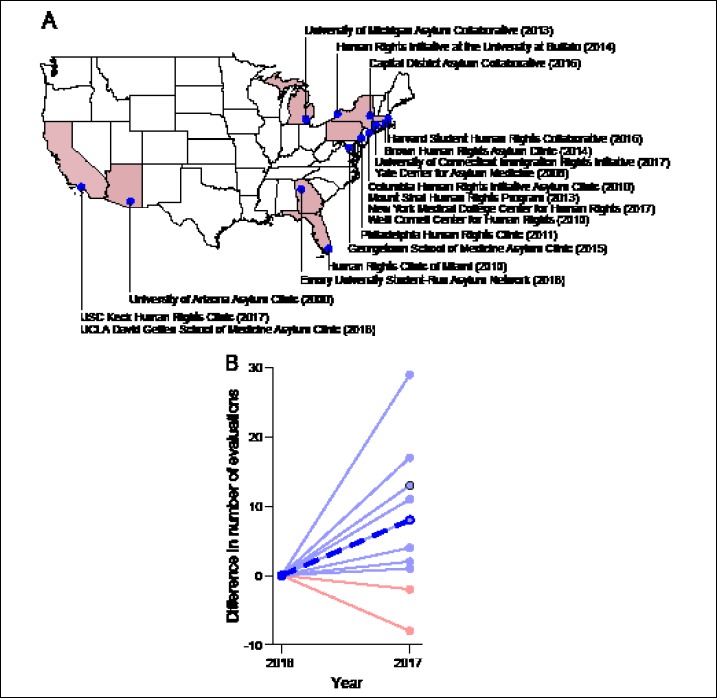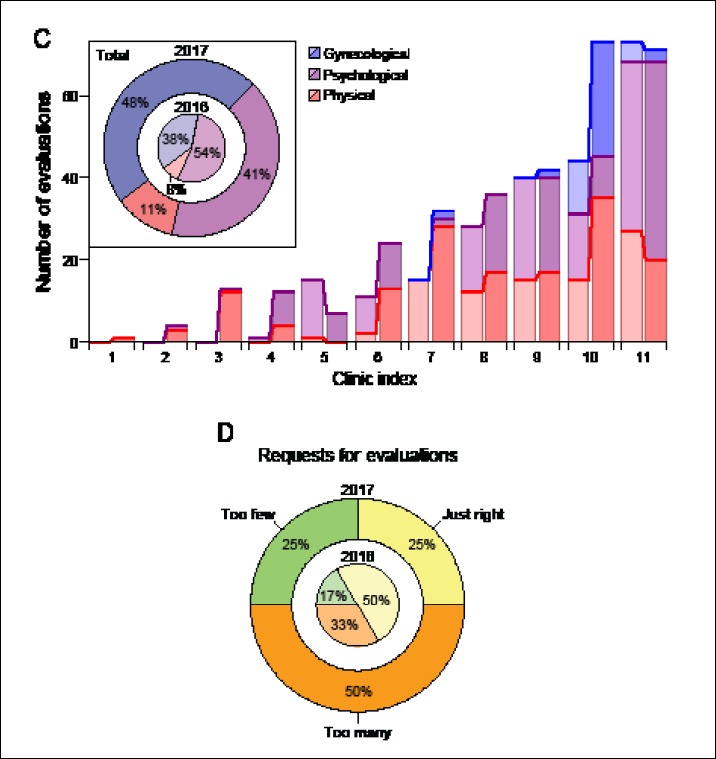. 2019 Dec;21(2):309–323.
Copyright © 2019 Sharp, Milewski, Lamneck, and McKenzie.
This is an open access article distributed under the terms of the Creative Commons Attribution Non-Commercial License (http://creativecommons.org/licenses/by-nc/4.0/), which permits unrestricted noncommercial use, distribution, and reproduction in any medium, provided the original author and source are credited.
Figure 2.


Caseloads for student-run asylum clinics
